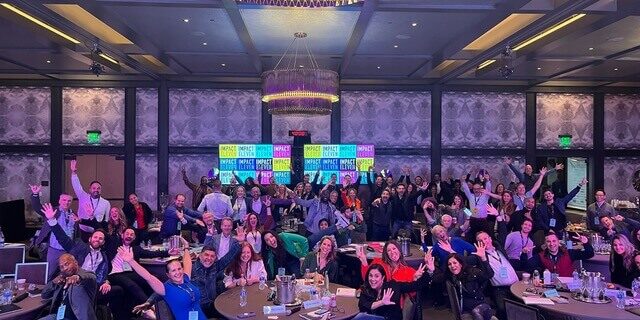 How much does your annual performance review process cost your company, in dollars and man hours? What are the benefits and lasting effects of annual reviews?
How much does your annual performance review process cost your company, in dollars and man hours? What are the benefits and lasting effects of annual reviews?
At Adobe, Senior Vice President of People Resources Donna Morris asked herself those questions and she wasn’t satisfied with the answers. Following my recent engagement with Adobe, I had the chance to chat with Donna to learn more about the changes Adobe made to improve their employee review process.
Adobe saw a need for innovation
Adobe has 11,500 employees around the world who participated in an annual performance review process. Because employees only heard feedback from their managers once a year, there was often a negative “hangover” after the review period. The feedback they heard came as a surprise.
At the end of the day, performance reviews weren’t resulting in improved business goals; they actually were hurting the company. Donna shared that the reviews were leading to a higher level of voluntary attrition (losing people the company didn’t want to lose). Those exits caused a domino effect of hampered productivity. Performance reviews were a huge cost to the organization, and the intended benefit wasn’t there.
Donna was in India managing the performance review period when a reporter interviewed her about how human resources as a function should evolve. Her gut reaction? Abolish the performance review.
The leadership, managers, and employees at Adobe agreed. The company was sinking 80,000 hours per year on performance reviews. That balances out to around 43 full-time employees. The People Resources team took a step back to reconsider the process and its use of employees’ time. “At Adobe, our true asset is our people. We’re highly dependent on people who come in and are super motivated to have an impact on the business.”
They created a new performance review process – the “check-in”
So, Adobe started working toward a change. Last year, the company implemented a new “check-in” system. They dumped the formal performance review forms, rankings, and calibration sessions. Now, the company encourages people to set expectations for every year, get feedback on a regular basis, and create a plan for growth and development.
Adobe’s check-in has 3 elements:
- Expectations: At least once a year, every employee proposes expectations to his or her manager. Expectations are documented and understood between the manager and the employee. The process is collaborative — a two-way conversation.
- Feedback: Employees need to know how they’re doing along the way. Employees provide and receive feedback often, and they receive quarterly reminders to review expectations and have sessions to give and receive feedback.
- Growth and Development: Each employee owns their own career and their personal development plan. Employees are encouraged to consider how they can grow in their current role, and have an open dialogue about future roles: What is my work leading to?
The People Resources team was careful to remember two things when they rolled out the new check-in system.
The process is important. The tools you use don’t matter as much.
At this point, Adobe is not leveraging technology for any of these purposes — and that’s by design. “Once you introduce technology, it becomes more about the tech and the process than the conversation,” Donna says. It’s not about the software or the tool. Instead, Adobe’s goal was to be “brilliant at the basics.” The team didn’t want to delay action because we couldn’t find the perfect tool. In time, Adobe will be able to scale this process by using technology, but that’s down the road.
As with any new HR program, communication and training are crucial.
Employees can’t start to see a new program coming out of HR every month. To create a successful program, HR needs to be consistent and make sure that everyone is on the same page. The Adobe team trained every employee and manager in info sessions, explaining why the organization was making the change and how to manage each step of the check-in. They established a strong Employee Support Center, with a team that can support any employee, no matter their level or location, to make sure they know how to give and receive feedback, set expectations, and create a growth and development plan.
The Results: a Home Run
A little over a year after the change, Adobe has seen a 2% decrease in voluntary attrition globally. Plus, involuntary attrition (losing people who were experiencing performance issues) increased by 2.5%. The organization has also had an upward trend in employee sentiment, and overall the company is performing well. Donna has seen a “halo effect” from the performance review change: “if people feel like they’re part of the success, they give more to the company.” Even though it was just one change from one department, she says, “I believe in some small part that it has contributed to the effectiveness and the success of the company that we’re seeing right now.”
Advice for HR innovation from Adobe
When I asked Donna if she had any advice for HR professionals facing obstacles in their own innovation, here’s what she had to say.
HR people can be extremely change-resistant. Get comfortable with the idea that things are always going to evolve. HR has to evolve alongside the organization’s strategy. If your business is transforming, your human resources department needs to transform, too. HR should be the most innovative function in the organization, since the ultimate goal is to enable success of the company we all work for and the people who are in it.
To lead change, you need to understand as much as you can about where your business is going and what it requires of your people. Then, you need to have a strategy or vision around what your function can do to enable an impact on the company.
Donna acknowledges that not every organization can or should abolish performance reviews, but she says: “What I would challenge people in our function to think about is: how do we make the best impact to the business? It’s beyond hiring and paying people — it truly can be about helping to lead the growth, transformation, and innovation of the business. The role of HR needs to become more akin to a consultant to the business.”
How are you leading innovative change at your organization?







![[RYAN] Featured_Why Human-Centered Leadership Is the Future of Growth [RYAN] Featured_Why Human-Centered Leadership Is the Future of Growth](https://ryanestis.com/wp-content/uploads/bb-plugin/cache/RYAN-Featured_Why-Human-Centered-Leadership-Is-the-Future-of-Growth-1024x538-panorama-78e9dc1762c564216c0e9d2780c005b1-.jpg)


